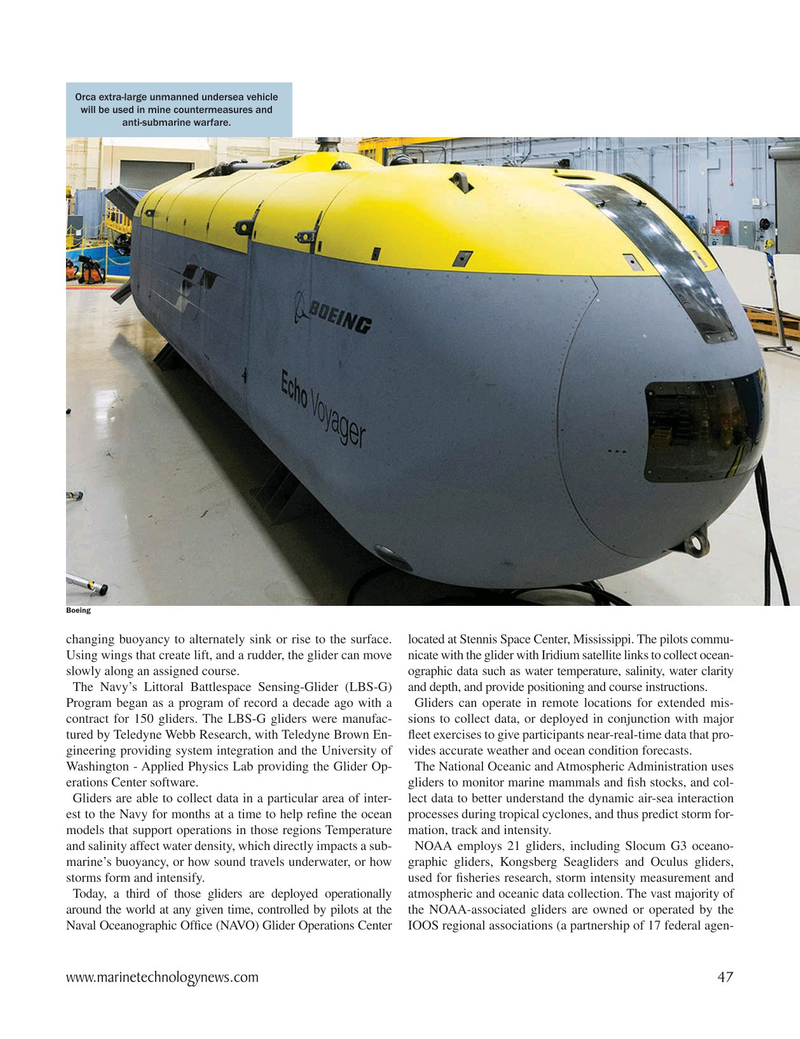
Page 47: of Marine Technology Magazine (January 2021)
Underwater Vehicle Annual
Read this page in Pdf, Flash or Html5 edition of January 2021 Marine Technology Magazine
Orca extra-large unmanned undersea vehicle will be used in mine countermeasures and anti-submarine warfare.
Boeing changing buoyancy to alternately sink or rise to the surface. located at Stennis Space Center, Mississippi. The pilots commu-
Using wings that create lift, and a rudder, the glider can move nicate with the glider with Iridium satellite links to collect ocean- slowly along an assigned course. ographic data such as water temperature, salinity, water clarity
The Navy’s Littoral Battlespace Sensing-Glider (LBS-G) and depth, and provide positioning and course instructions.
Program began as a program of record a decade ago with a Gliders can operate in remote locations for extended mis- contract for 150 gliders. The LBS-G gliders were manufac- sions to collect data, or deployed in conjunction with major tured by Teledyne Webb Research, with Teledyne Brown En- ? eet exercises to give participants near-real-time data that pro- gineering providing system integration and the University of vides accurate weather and ocean condition forecasts.
Washington - Applied Physics Lab providing the Glider Op- The National Oceanic and Atmospheric Administration uses erations Center software. gliders to monitor marine mammals and ? sh stocks, and col-
Gliders are able to collect data in a particular area of inter- lect data to better understand the dynamic air-sea interaction est to the Navy for months at a time to help re? ne the ocean processes during tropical cyclones, and thus predict storm for- models that support operations in those regions Temperature mation, track and intensity.
and salinity affect water density, which directly impacts a sub- NOAA employs 21 gliders, including Slocum G3 oceano- marine’s buoyancy, or how sound travels underwater, or how graphic gliders, Kongsberg Seagliders and Oculus gliders, storms form and intensify. used for ? sheries research, storm intensity measurement and
Today, a third of those gliders are deployed operationally atmospheric and oceanic data collection. The vast majority of around the world at any given time, controlled by pilots at the the NOAA-associated gliders are owned or operated by the
Naval Oceanographic Of? ce (NAVO) Glider Operations Center IOOS regional associations (a partnership of 17 federal agen- www.marinetechnologynews.com 47
MTR #1 (34-49).indd 47 1/25/2021 8:45:51 AM

 46
46

 48
48
